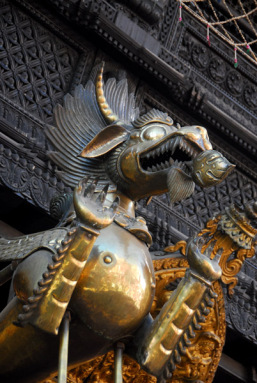
Nepal- some view it as home to Shangri-la, others say the land of magnificent natural beauty or a place for adventure seekers. Whatever other world view Nepal, it had a different world inside this world in ancient times. There are architecture belonging to 4th century AD still standing strong or 5th century temple which still holds hundreds of pilgrims on a daily basis. There is evidence of settlement dating back B.C, this can be proved by the calendar of Nepal that depicts a different date than another outside world. As my writing of this article Nepali calendar is at 2078 where as the Gregorian_calendar is in 2021. To the outer world about the difference in the date, it is the point where I am trying to state that the civilization and settlement with proper historical value had been in this land years ahead.
Every artifact or architecture amazes me to see how it was created or built-in those days without any modern tools. Nepal is or in ancient times was not easy to navigate. The resources were very limited for construction. Mostly wood and stone were used for building. Being landlocked and trade was mostly done one-sided with the neighboring country now India, as the side with Tibet now China was difficult to travel is in the Himalayan side. But, one thing Nepal did was it never copied other nations how it was defined but rather each individual but the tiny nation at those days had a different version of their own. For example, now Kathmandu was divided into three kingdoms also known now as Bhaktapur, Patan, and Kathmandu.
Bhaktapur was famous for its wooden architecture and artifacts.

Patan was known for its craftsmanship on metal work

Kathmandu was the major hub and it was the mixture of both wood and metal work

For the buildings and their design, ancient Nepal had three major designs. These are all ancient designs mostly dedicated towards a deity or it was home of the Ruler of the state.
The pagoda style:

The pagoda style has been a subject of debate for a long time. There are countries that have much pagoda-style old architecture, they can be found in China, Japan, Korea, Vietnam, and other parts of Asia. Here the question is Did Nepal get influenced by other such countries and who had visited those countries. But still building this massive-looking architecture was not a simple task, it needed precise engineering and a very strong foundation. That is the reason why there are pagoda-styled temples still standing tall from 4th century A.D. History of Nepal suggests that pagoda style was founded in Nepal and an architect of those times called Arniko, was born in Kathmandu Valley and during the reign of Abhaya Malla. He is known for building the White Stupa at the Miaoying Temple in Beijing. Then that style flourished in the rest of the world. But still, it is a mystery about the existence of this style.
2. The Stupa Style

The stupa style is supposed to have been introduced in Nepal by Indian King Ashoka in the first century BC. He erected five stupas in Patan, Buddhanath, Swayambhunath, and Charumati in Kathmandu. A later small and similar type of stupa can be found in alleyways and courtyards. Monuments based on this style of architecture of Nepal have a typical hemispherical dome shape with a pyramid-like structure on top and a square base. Mostly this type of structure represented Buddhism and its five elements being earth, water, fire, air, and space. The good thing about this type of architecture is its history can be found engraved at the base of the dome. This helps to find the era, date, and founder of the stupa.
3. The Shikhara Style

The Shikhara-style temple was initially introduced by the Guptas in the 6th century. It was later introduced to Nepal by the Lichhavi dynasty. This style was used for building both Hindu as well as Buddhist temples. The main feature of the Shikhara type of temple is its curvilinear or pyramidal tower. In 1637 Siddhi Narshima Malla built one of the prominent Shikhara-styled temples in Patan dedicating to Lord Krishna. This amazing architecture still stands strong, although it is open to the public only once a year. The Shikhara style is the most complex structure to built as it contains multiple-layer stacked upon each other narrowing at the top end.






